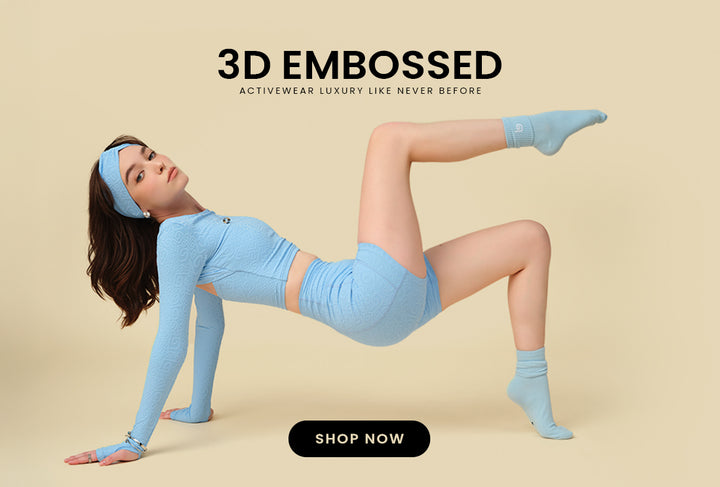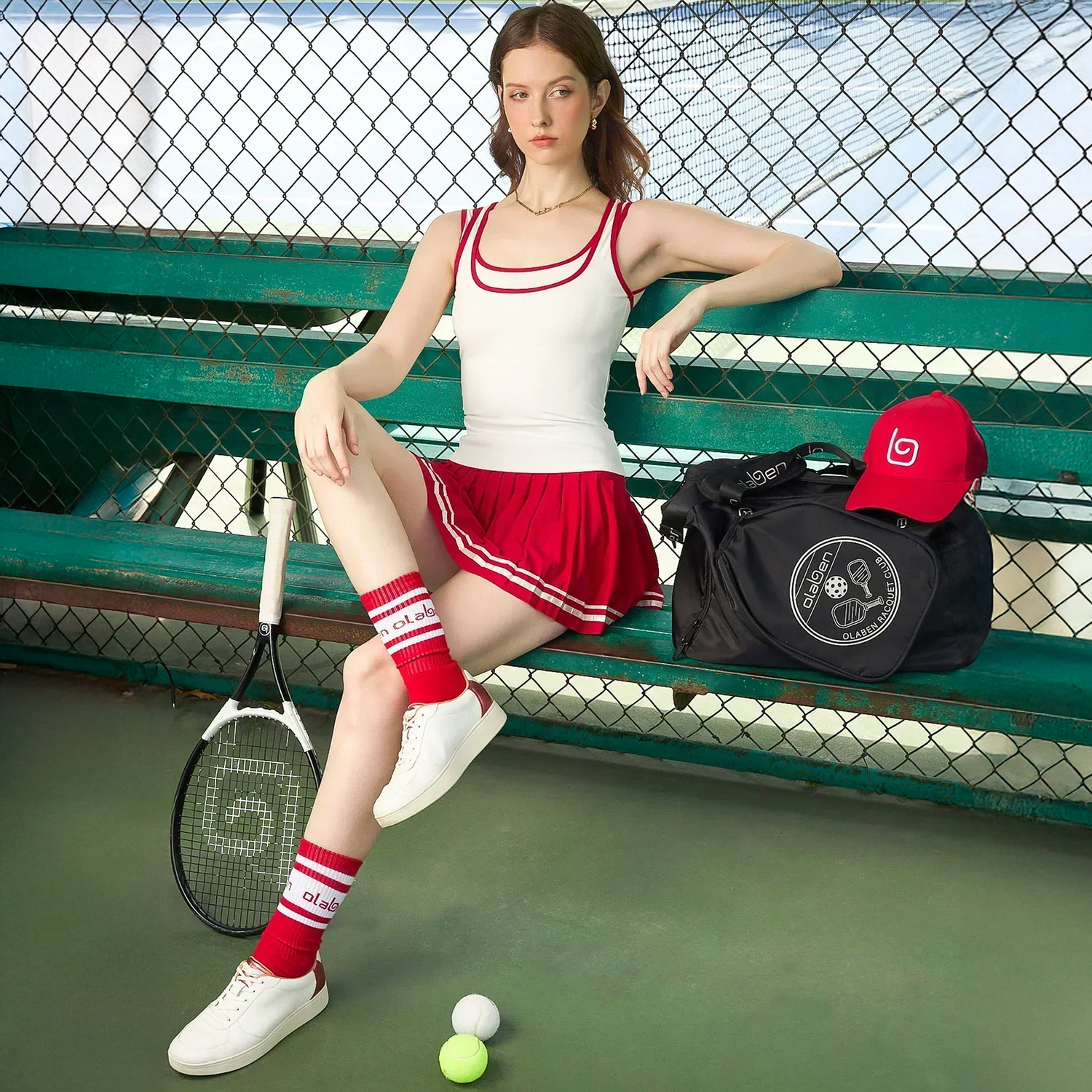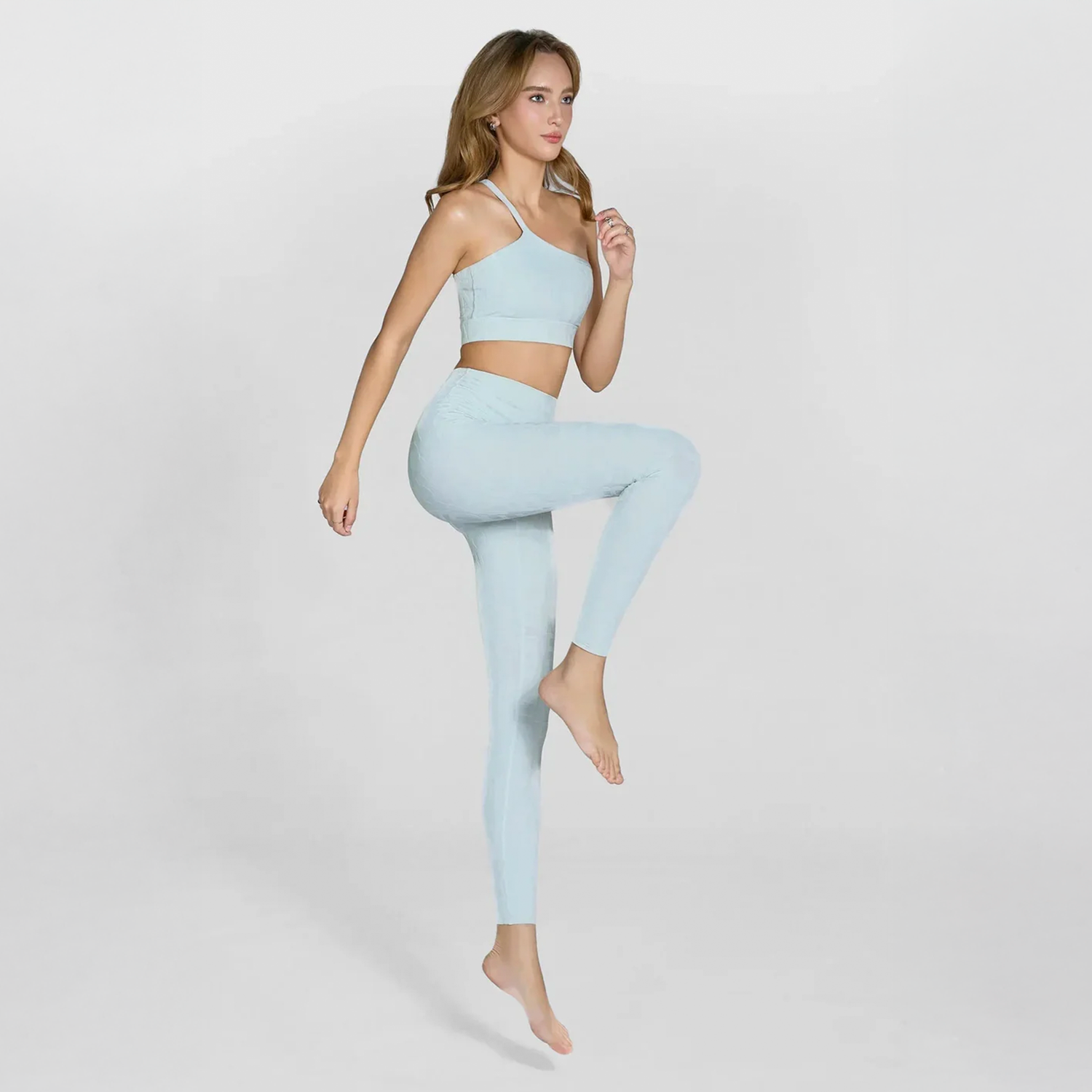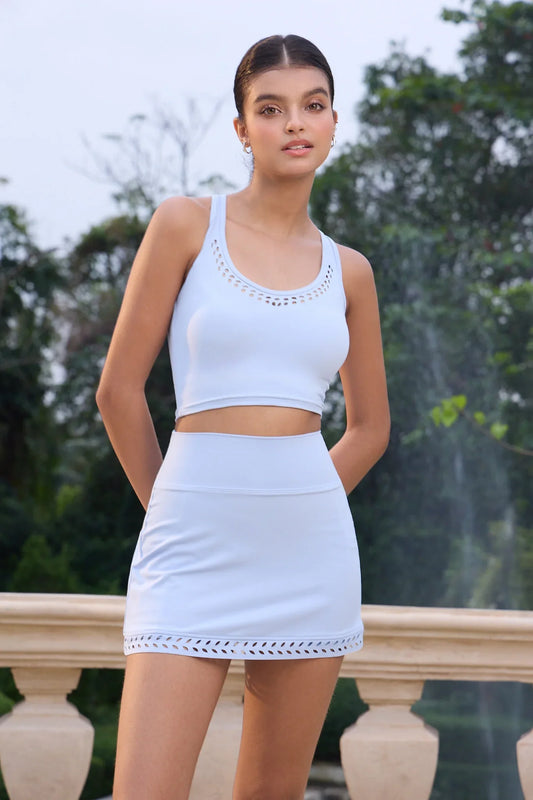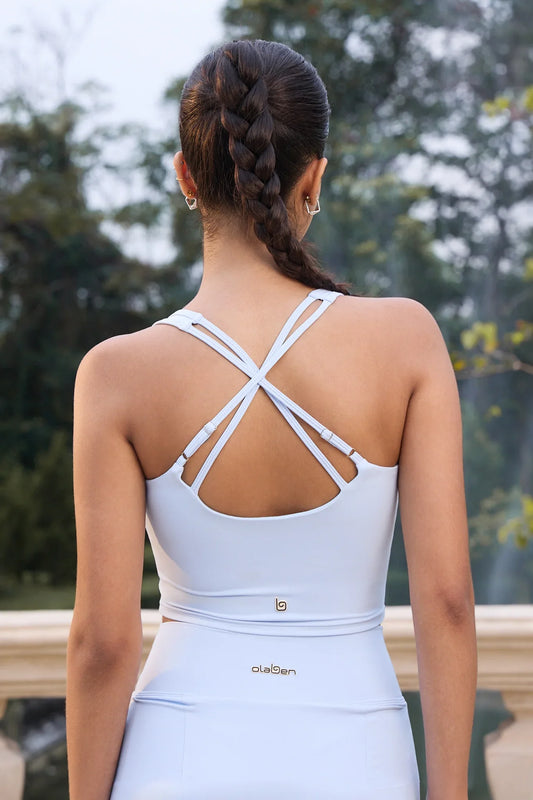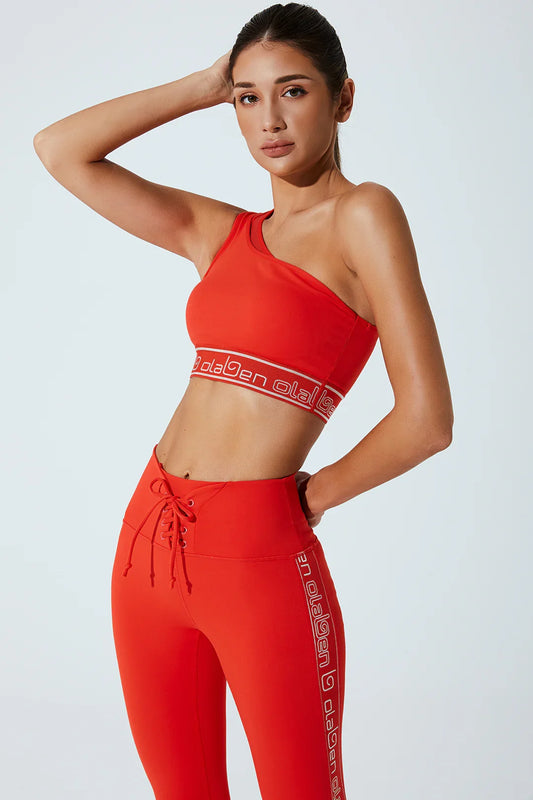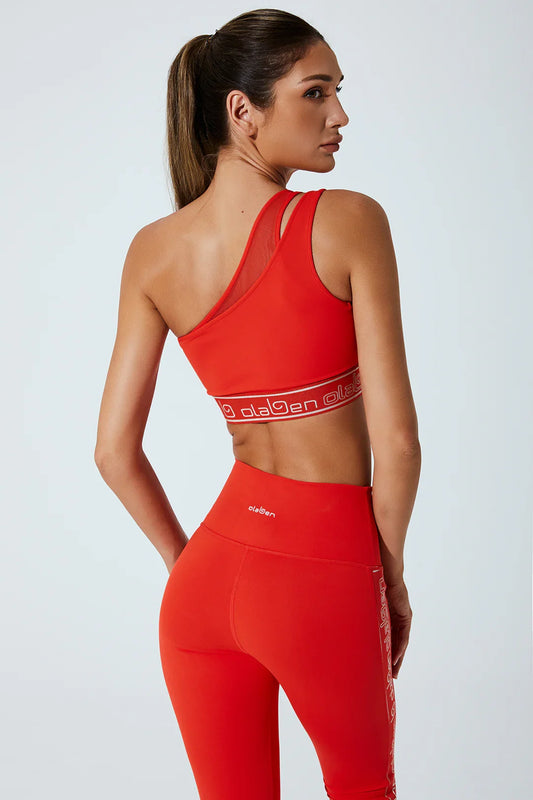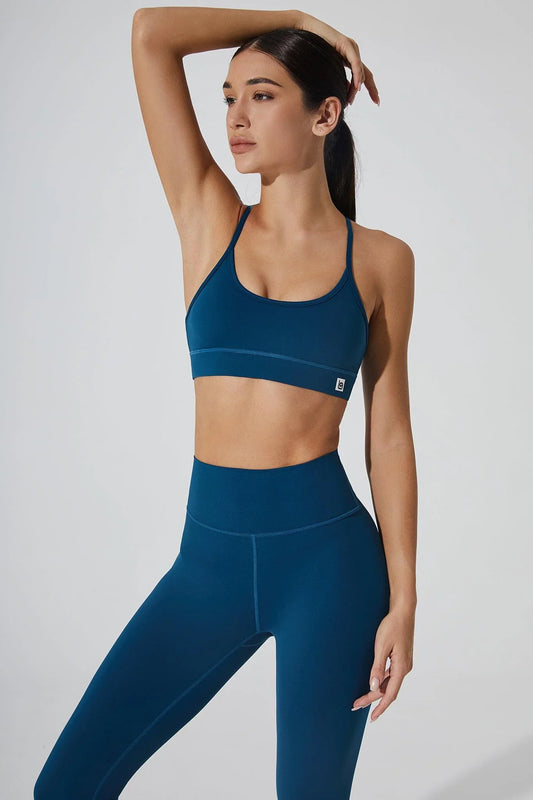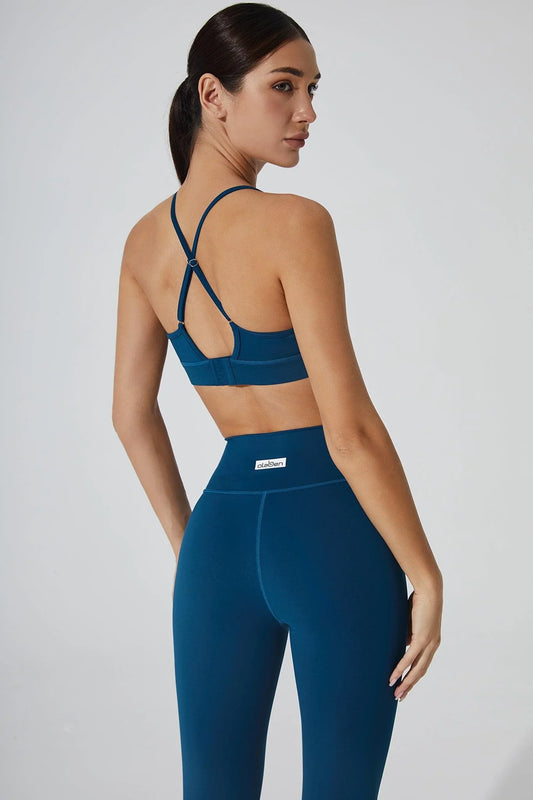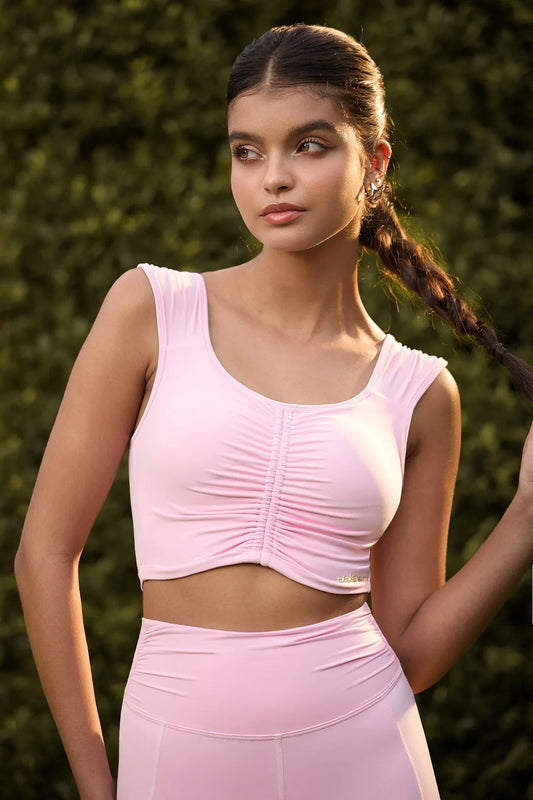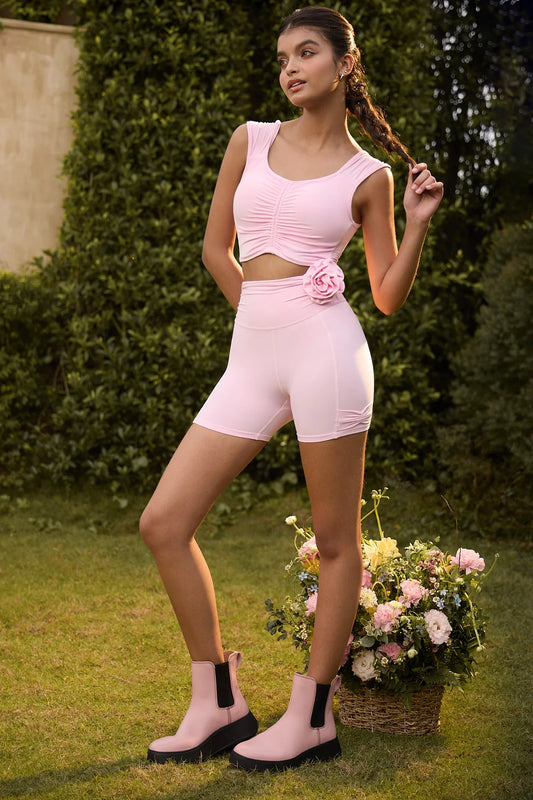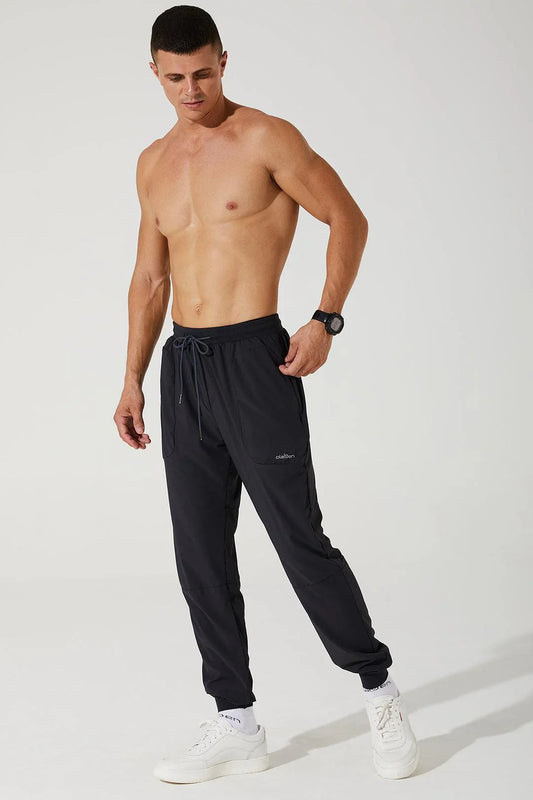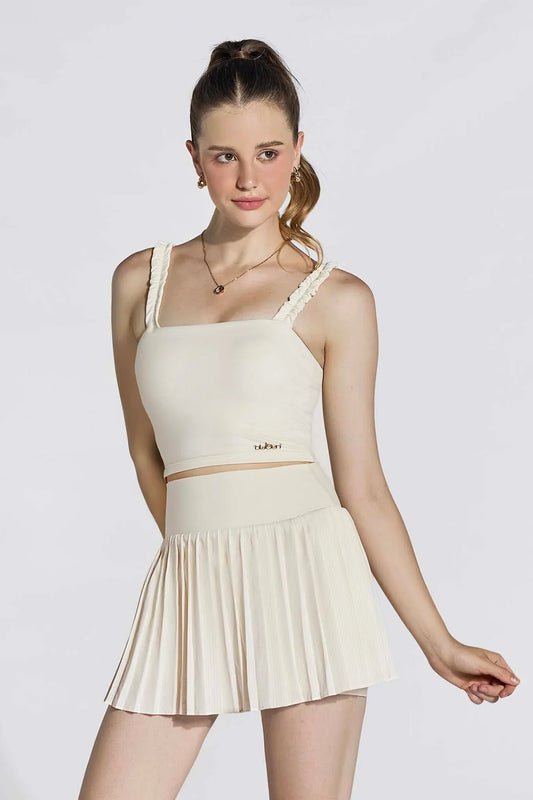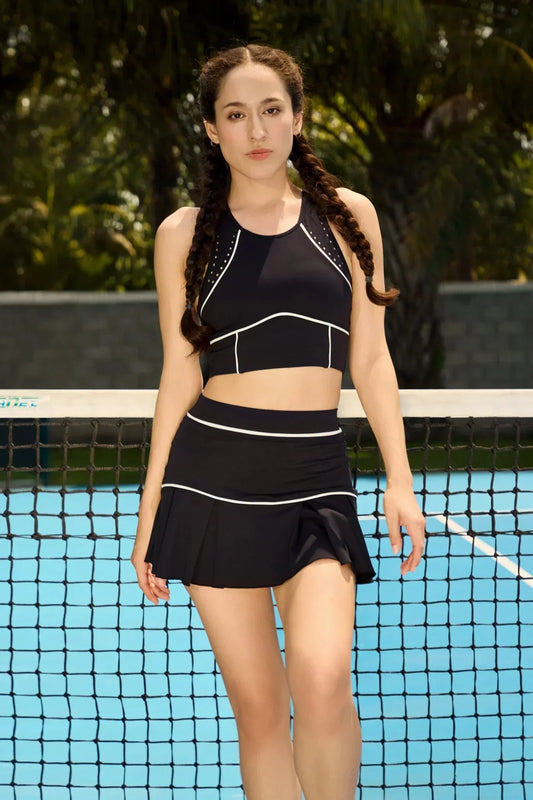Tại sao chọn áo ngực thể thao đúng size lại quan trọng?
Hơn 80–90% phụ nữ mặc sai kích cỡ áo ngực – và áo ngực thể thao cũng không ngoại lệ. Một chiếc áo ngực thể thao không vừa không chỉ gây khó chịu, mà còn làm giảm hiệu suất tập luyện, gây trầy xước da và thậm chí ảnh hưởng đến mô ngực về lâu dài. Một chiếc áo vừa vặn sẽ giúp bạn:
- Giảm thiểu độ rung lắc khi vận động
- Bảo vệ dây chằng Cooper (có chức năng nâng đỡ ngực)
- Giảm áp lực lên vai, lưng và cột sống
- Ngăn ngừa kích ứng và trầy xước da
- Tăng sự thoải mái và tự tin trong khi tập luyện
Tóm lại, một chiếc áo ngực thể thao vừa vặn không chỉ thoải mái hơn – mà còn giúp bạn tập luyện hiệu quả hơn.

Dấu hiệu nhận biết áo ngực thể thao vừa vặn
1. Phần đai (Band Support)
Phần đai chính là bộ phận nâng đỡ nhiều nhất trong một chiếc áo ngực thể thao.
- Nằm ngang quanh lồng ngực, không bị kéo lên cao.
- Ôm sát nhưng không gò bó – bạn nên đưa lọt 2 ngón tay vào giữa đai và cơ thể.
- Nếu đai siết quá chặt → quá nhỏ. Nếu bị kéo lên → quá rộng.
- Đai bản to thường đem lại sự ổn định tốt hơn cho các bài tập cường độ cao.
2. Dây quai (Strap Comfort)
Dây quai giúp cố định cúp ngực sát cơ thể – chứ không phải chịu toàn bộ trọng lượng.
- Nằm phẳng trên vai, không siết chặt cũng không tuột.
- Có thể điều chỉnh để đảm bảo độ bền lâu dài.
- Quai dày hoặc có đệm giúp phân tán lực tốt hơn, đặc biệt với ngực lớn hoặc khi tập nặng.
3. Cúp ngực (Cup Fit)
- Ngực cần được ôm trọn, không hở và không tràn ra ngoài.
- Bị tràn = cúp quá nhỏ. Có khe hở/nhăn = cúp quá lớn.
- Cúp encapsulation (nâng từng bên riêng) hay compression (ép sát ngực) nên chọn theo dáng ngực và loại bài tập.

Cách đo size áo ngực thể thao chuẩn
Đo vòng chân ngực (Band Size)
Dùng thước dây đo sát ngay dưới bầu ngực. Làm tròn đến inch gần nhất.
- 25"–27" → Band 30
- 27"–29" → Band 32
- 29"–31" → Band 34
- 31"–33" → Band 36
- 33"–35" → Band 38
- 35"–37" → Band 40
Đo vòng ngực (Cup Size)
Đo ngang phần đầy nhất của bầu ngực. Lấy số đo này trừ đi số đo chân ngực.
- Chênh 1" = Cúp A
- Chênh 2" = Cúp B
- Chênh 3" = Cúp C
- Chênh 4" = Cúp D
- Chênh 5" = Cúp DD/E
- … và cứ thế tăng dần.
Thử và kiểm tra
Mỗi thương hiệu có size hơi khác nhau – hãy thử bằng cách nhảy hoặc chạy tại chỗ để chắc chắn áo cố định tốt.

Các vấn đề thường gặp & Cách khắc phục
Đai bị kéo lên
- Dấu hiệu: Khi giơ tay hoặc vận động, đai áo bị kéo lên thay vì nằm ngang.
- Nguyên nhân: Đai quá rộng hoặc bị giãn.
- Khắc phục: Giảm một size đai nhưng giữ nguyên cup. Khi thử, hãy chắc chắn đai ôm ngang lưng và không xê dịch khi nhảy.
Ngực bị tràn (Cup Spillage)
- Dấu hiệu: Ngực tràn ra trên hoặc hai bên cúp.
- Nguyên nhân: Cúp quá nhỏ.
- Khắc phục: Tăng cup size. Ưu tiên áo có cúp encapsulation để che phủ tốt hơn.
Cúp bị hở (Cup Gaping)
- Dấu hiệu: Cúp bị nhăn hoặc có khoảng trống.
- Nguyên nhân: Cúp quá lớn hoặc dáng áo không phù hợp.
- Khắc phục: Giảm cup size hoặc chọn áo compression để ôm sát ngực.
Dây quai siết vào vai
- Dấu hiệu: Vai có vết hằn đỏ hoặc đau nhức.
- Nguyên nhân: Đai không nâng đỡ tốt, khiến lực dồn hết lên quai. Quai quá mảnh.
- Khắc phục: Giảm band size để đai nâng đỡ nhiều hơn. Chọn áo có quai dày/đệm, điều chỉnh lại độ dài quai.
Dây quai bị tuột
- Dấu hiệu: Quai rơi khỏi vai khi tập.
- Nguyên nhân: Quai quá dài, quá lỏng hoặc dáng vai dốc.
- Khắc phục: Rút ngắn quai, chọn kiểu racerback hoặc cross-back. Nếu dây đã giãn, cần thay áo mới.
Kết luận
Việc chọn áo ngực thể thao phù hợp không chỉ là con số trên nhãn – mà là sự thoải mái, nâng đỡ và tự tin. Hãy dành thời gian đo đạc, thử nhiều kiểu dáng và chọn dựa trên cơ thể cũng như loại hình tập luyện của bạn.
Một chiếc áo ngực thể thao vừa vặn sẽ giúp bạn bảo vệ cơ thể, tránh khó chịu và đạt hiệu quả cao nhất trong từng chuyển động. Thương hiệu Olaben mang đến áo ngực thể thao kết hợp công nghệ nâng đỡ cùng thiết kế hiện đại, đem lại cả hiệu suất và phong cách. Dù bạn tập yoga, gym hay chạy bộ, Olaben luôn có lựa chọn hoàn hảo để đồng hành cùng bạn.
